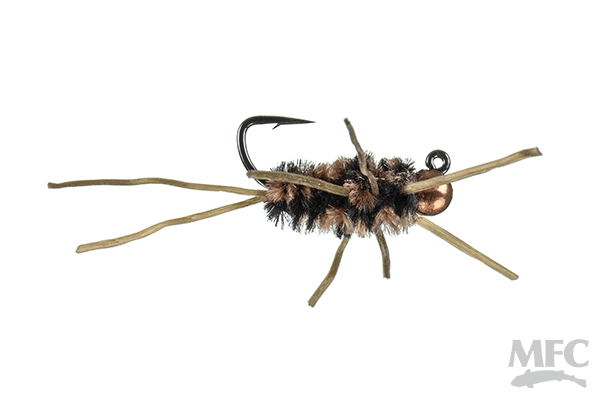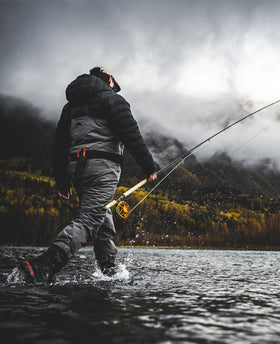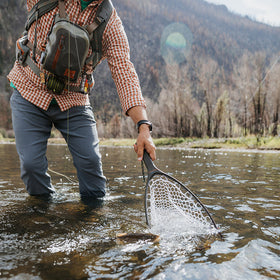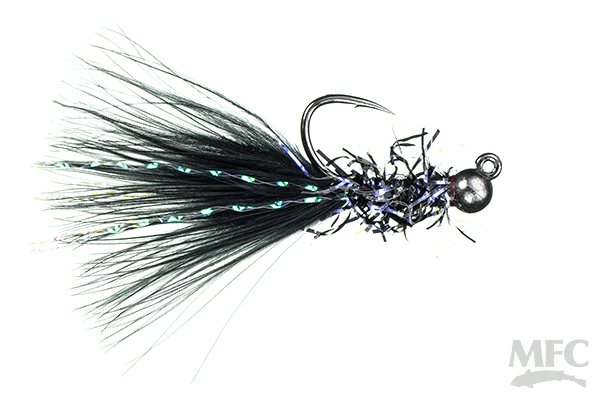
3 Flies for the week: February 5
Well that was a lot of snow that we got over the weekend. Definitely wasn’t a fun drive, but it was much needed for our river systems. We are currently below the average snowpack and things aren’t looking too promising with these high temperatures we’ve had and will continue to have. Sadly, many of our freestones and lower sections of our tailwaters will probably have closures this summer with the way things are going. I’m remaining optimistic though and hope we get blasted with a lot more snow and/or heavy rains during the spring and summer.
Not all is bad right now though. Our tailwaters, freestones, and even the DSP have been fishing phenomenally lately. Tailwaters are all fishing like they should be, eggs, scuds, and midges have been the go-to flies as of late, with still some BWO action down in Pueblo. We’ve spoken with many customers in the shop saying all sections of the South Platte have been fishing off the chart, and our recent outings have proved that to be true. Don’t anticipate too much dry fly activity, there are rising fish but the majority of fish don’t spend the energy rising for tiny midge adults. If you can find a riser though, take a cast! Winter rises are very eager to eat whatever is in front of them.

Outside of the tailwaters, what few freestones that are open have been fishing good as well. Rivers like the Arkansas and Eagle have plenty of open water this year. Most of our success has come from small stonefly patterns, eggs, leeches, dull caddis larvae, bigger midges (sz18-20), and streamers. Nymphing has been the most productive method, but the middle of the day or near dusk has had a great streamer bite. If you’re getting tired of catching trout, the DSP has been producing a lot of carp lately. I wouldn’t expect the river to fish well over the next few days as the rain and snowmelt have raised and dirtied the water. Once the flows drop back down, fishing conditions should return to normal. Most of our luck has come from black jigged leeches in numerous variations. Even if carp aren’t your thing, the trout fishing on the DSP has been fantastic lately and is always a great alternative to scratch that trout itch without having to drive too far.
This week, I’m going to be recommending one fly for each different river system. One for the tailwaters, one for the freestones, and one for the DSP. I like mixing things up every once in a while. If you don’t, I’m sorry, but I’m still going to do it. All jokes aside, I think our current river conditions allow anglers to have plenty of choice in where they want to go or how they want to fish. So without further ado, let’s get into the flies.
#1: Straggle Leech - Black sz10
This is a fly that I would be fishing anywhere right now, but I’m highlighting this fly for the DSP. There’s a general misconception that carp quit eating once the water gets cold. There is some fact to this, but it’s not entirely true. A carp’s metabolism slows down drastically in the colder months because they’re a warmwater fish that prey on food items that are predominantly active in the summer (i.e. crawdads, hellgrammites, freshwater mussels, etc.). That being said, carp still find time in the winter to eat, particularly the fish in the DSP because it’s a river with a decent amount of current and stays relatively ice free. Also, much like trout, carp have a hard time passing up a free meal drifting by them during times where food is inactive. We like fishing the straggle leech in the winter because it’s a small, flashy, yet realistic pattern. Small is good in the winter because, once again, the fish aren’t eating much and when they do they look for an easy meal. Small meals are much easier to take in and are less likely to escape. Flash is an interesting concept when it comes to carp flies. We find that fishing flashy flies in the summer months when carp are actively hunting and feeding all day just doesn’t produce. Whereas, that extra little flash in the winter seems to convert these relatively dormant fish into eating. Not too much flash though! We don’t want carp flies being shiny items on the river bottom, instead we want just enough to catch their eye. The straggle leech also has a ton of weight in it and will make it easier to present your fly to the fish sitting in the deepest of runs. Its jig profile also prevents it from snagging up on the shopping carts on the bottom of the river (haha).
#2: Jig BH Girdle Bug - Coffee/Black sz14 3.3mm

This fly is going to make itself home on the open freestones. The Arkansas and Eagle Rivers are plump full of stoneflies and the fish readily eat them when they get a chance. This time of the year I like fishing the smaller sized “attractor” stones because it does a better job of mimicking the size of most stoneflies during this stage of the life cycle. Not to say that there aren’t any that are bigger than a sz14, but most are going to be generally smaller. Additionally, the small black winter stoneflies should begin to hatch at any moment. This fly is pretty big in comparison to these bugs, but the fish will be so locked in on their general profile that a bigger presentation isn’t going to ruin anything. Heck, I’m sure most of us have caught fish on flies that are two or three sizes larger than what’s actually hatching. This is the same concept. This fly is built on a jigged hook with a heavy tungsten bead. There are many positives to fishing a jig fly that I’ve beat to death already. But, if you don’t know or remember the positives of a jig fly, go check out some of the previous 3 Flies for the Weeks.
#3: BH Scud - Orange or Pink sz16 (In-Store Only)

Last, but certainly not least is the fly of the week for the tailwaters. With the constant change in flows on the South Platte, high caloric food sources, such as scuds, have been getting knocked out of their usual hiding spots. When these food sources are out and about, it can sometimes be hard to convince the fish to eat anything but them. I’ll never complain when the scud bite is on. Typically the fish will be more aggressive trying to eat them and the relatively bigger hook allows for a higher landing ratio. I like this standard scud over some of the flashier options because I’ve never seen a flashy scud, ever. Scuds are incredibly dull, even when they're dead (which is what an orange or pink scud imitates). I can understand why the flashy versions catch fish at times, but this is typically when water levels are incredibly high or dirty and that flash helps catch the trout’s eye more effectively. Outside of these scenarios it’s not necessary and the presentation is so large, the fish will see it anyways. I like the orange scud this week because the ever changing water conditions are knocking around a ton of scud, which increases their likelihood of dying. Dead scuds, as mentioned above, typically have a partial or full discoloration that is orange or pink in coloration. Personally, I haven’t had much luck with pink so I usually go for the orange when I think/know there will be a decent amount of dead scuds in the water. However, Tryston finds the pink to be his personal favorite scud color and hammers the fish on them. Whether it’s pink or orange, fishing a dead colored scud this week will pick up quite a few eats.
Best of luck on the water this week and we hope these flies catch a fish or two for ya. Two out of the three flies are available on our website and all are available in the shop. If you have any questions or concerns, feel free to reach out to Xavier on email at xavier@goldenflyshop.com, or call the shop at 303-330-1292. Thank you!







Leave a comment